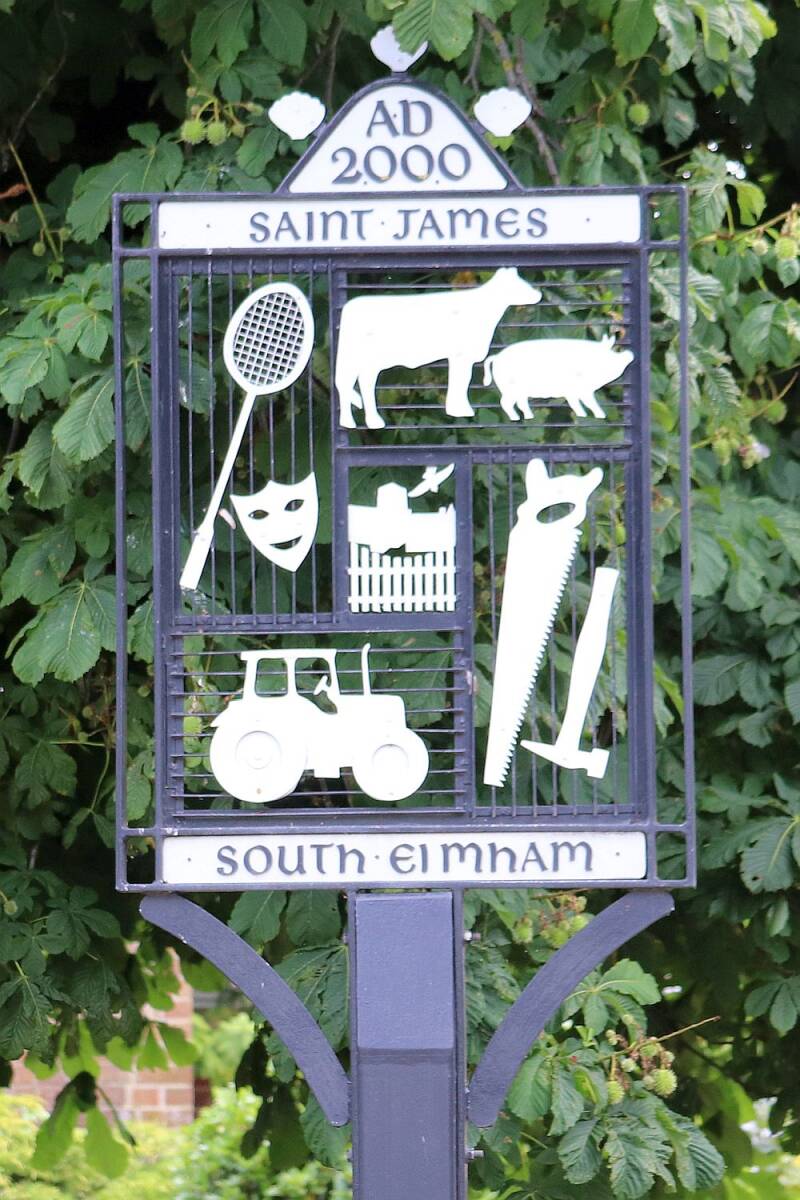South Elmham St James
The Sign
There are two village signs in South Elmham St James. The odd looking sign on the right shows a scallop shell sat on top of a wooden post with the village name shown in the small brick plinth. It was designed by Robert Parfitt. The shell represents the emblem of St James. It was erected in 2000.
The other sign shown on the left is surmounted by three scallop shells, the symbol of St James the patron saint of Spain. The badminton racquet and theatre mask relate to the village hall and recreation ground. The cow and pig give an indication of the local farming livestock and dairy farms, while the tractor at the bottom represents the modern arable farming. In the centre is the church and the old school behind a fence; the fence represents the local legend of the cuckoo. The saw and hammer represent all the trades in the parish, past and present. The sign was designed and constructed by Bernard Crockford with help from Judith Coombes, who were both residents of the village. It was unveiled on the 28th July 2000 to commemorate the Millennium by Bertha Thurston-Woolnough and Eddie Hadingham, senior residents of St. James.
The Name and Population
The population was 205 at the 2011 census. St James South Elmham is one of a group of seven parishes known as the Suffolk 'Saints'. Elmham was known as Almeham, Elmeham in 1086 and Elmham in the 12th century. In 1252 it became Suthelmeham; it became Seynt Jamys in 1542. The name means 'The homestead or village where elm trees grow'.
Other Points of Interest
In the past the villagers tried to build a hedge around a cuckoo, to keep the song for the village alone.
The parish church is dedicated to St James and dates from the 12th-century. It has a 13th-century tower and contains a number of Norman windows and a 12th-century font with a 15th-century cover.
Parts of RAF Metfield, a World War II airfield built in 1943 and used by the United States Air Force, extend into the west of the parish. An explosion in July 1944, caused by the mishandling of a number of bombs, shook the surrounding area, including St James.

